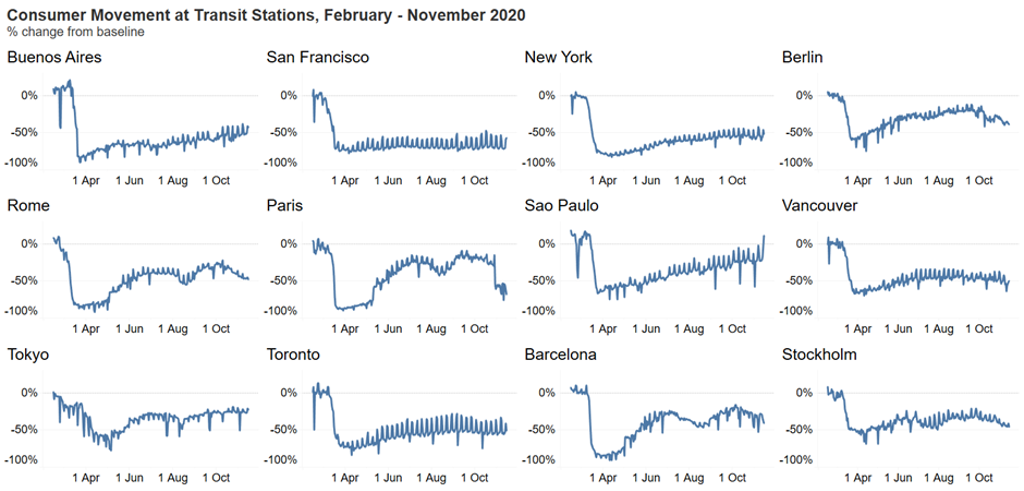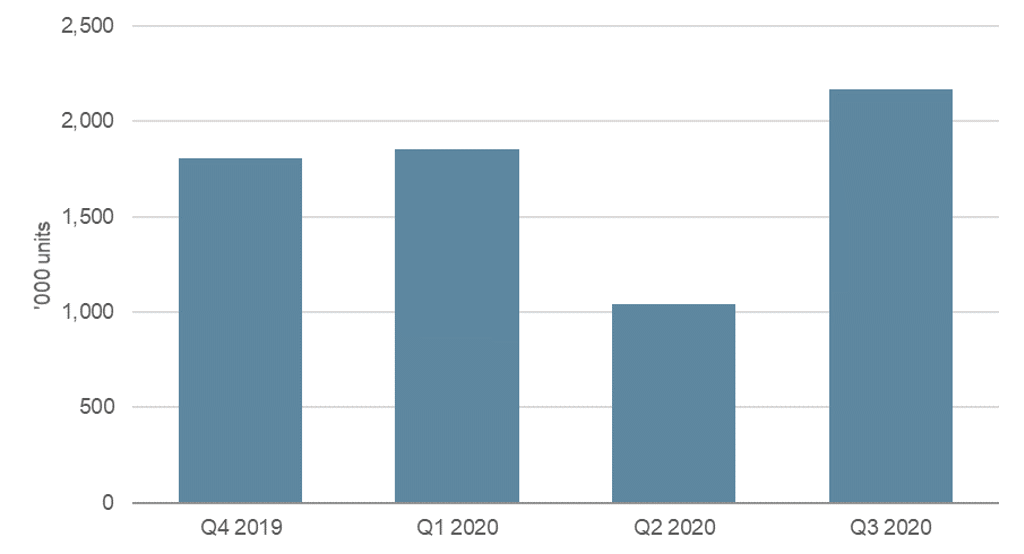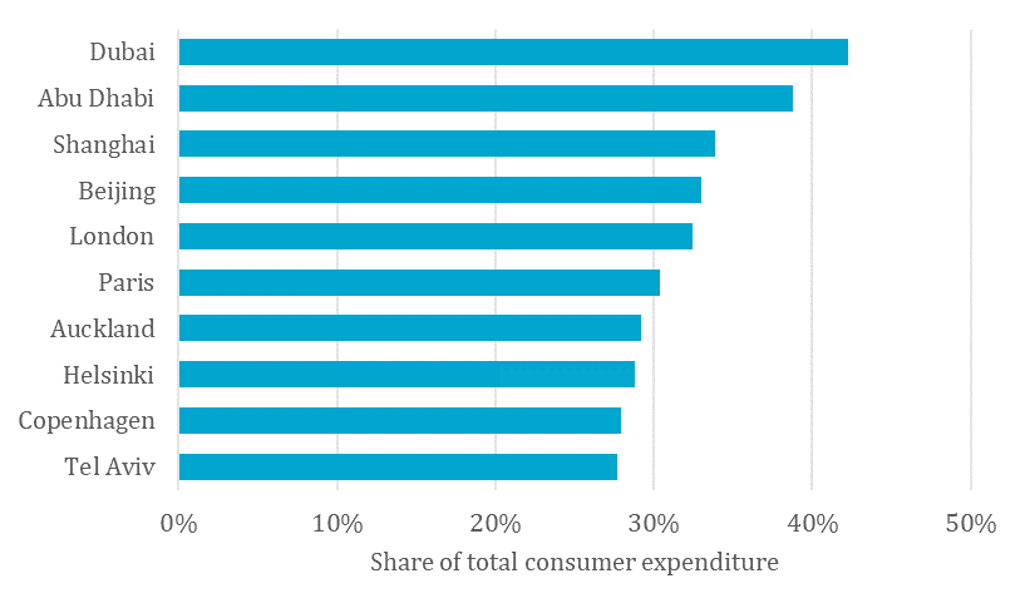Ongoing lockdown measures, changing consumer preferences and the heightened focus on safety triggered by the Coronavirus (COVID-19) pandemic are anticipated to alter the future of consumer mobility. The surge in homeworking and reduced use of public transport are expected to change how consumers will work and travel. In turn, these changes are set to have a broader impact on the urban planning and construction sectors.
Consumer mobility to decline due to working-from-home trend
Commuting is an important part of daily consumer lives. According to Euromonitor International’s Mobility Survey 2020, 52% of global respondents commute five or more days per week. Around 63% of respondents also indicated they spend on average 15-60 minutes on commuting every day.
However, the COVID-19 pandemic disrupted everyday lives and commuting patterns in many countries. Even though the situation is expected to stabilise in 2021, consumer mobility is likely to remain at a subdued level due to changing work patterns. The growing popularity of working from home will be one of the main reasons affecting consumer mobility. Working from home is likely to grow in popularity even after the pandemic, as this work model helps to reduce commuting time and improve work-life balance. According to the Euromonitor Lifestyles Survey 2020, 37% of respondents globally indicated that they want to work from home in the future. Similarly, 55% of the companies that participated in the Voice of the Industry survey in October 2020 also indicated they plan to expand remote working.
Increasing working from home would primarily impact mobility in megacities, where commuting times are typically longer and workspaces are concentrated in central business districts or the surrounding areas. Interestingly, the Lifestyles Survey also indicates that consumers in the emerging markets are more willing to work from home, the likely result of still developing transportation infrastructure and consequently longer commuting times.
Health concerns to reduce demand for public transport, increase usage of personal mobility modes
Personal health has become one of the main criteria for public transport users during the COVID-19 pandemic, with similar trends expected to prevail in 2021. Rising health concerns are likely to have a negative effect on public transport providers as commuters shift towards the modes of personal mobility. For example, Google Mobility Reports show that public transport usage did not fully recover once the first wave of the pandemic ended in the summer of 2020 and remained below normal levels.
Consumer Movement at Transit Stations in Selected Cities February-November 2020
Source: Google’s COVID-19 Community Mobility Reports, 2020. Note: ‘0’ refers to baseline levels
The large drop in public transport usage will be a major financial blow to public transport providers and cities. Among major cities, New York, Singapore, Hong Kong, Paris, Madrid and London face a major challenge since nearly two thirds of their public transport funding comes from ticket fares, according to the local transportation authorities.
However, such a situation may open up new business opportunities for companies providing other modes of shared mobility, such as bike/scooter rentals or car sharing. For example, mobility companies Mobike and Didi’ Qingju Bicycle increased the number of electric bicycles on Chinese city streets in 2020 due to growing demand for bicycle sharing services.
The popularity of personal cars for daily commuting is also expected to increase in the medium term. For example, households in the UK started purchasing used cars to avoid commuting by public transport, with similar trends also observed in other European countries as well as China. Personal cars will not replace public transportation completely, especially in megacities. However, they are becoming an increasingly attractive alternative for commuters in smaller cities or travelling longer distances.
Used Car Sales in the UK: Q4 2019-Q3 2020
Source: Society of Motor Manufacturers and Traders (SMMT)
Changing work and commuting patterns create challenges for urban planners
Changes in work and commuting patterns are expected to impact the urban planning, construction and real estate sectors. The growing popularity of working from home could have a knock-on effect on the real estate market, with a shift in interest from more expensive major cities towards less expensive secondary and tertiary cities near the main metropolitan areas.
Cities with the Highest Share of Consumer Expenditure on Housing 2019
Source: Euromonitor International from national statistics
Growth in suburban and outer city region populations may also provide new expansion opportunities for the construction industry as it could accelerate demand for housing in suburban areas. Moreover, in the long term, this could also result in a structural demand shift in the commercial property segment, as office and retail developers would follow the consumers and invest in new properties in suburban areas.
However, a shift towards suburban areas creates new challenges for cities and city economies. Population shift from the major metropolitan areas would result in overcapacity in existing transportation and social infrastructure, increasing the infrastructure cost burden. At the same time, cities are very likely to face declining tax revenues as workers and businesses would move to other areas.
Many cities were already witnessing this problem even before the pandemic, with COVID-19 acting as an additional catalyst. As more challenges unfold in the future, cities will have to find economical and sustainable ways to adapt to changing commuting and working patterns. Some cities have already started to repurpose streets. For example, pop-up bicycle lanes were introduced in Paris, Berlin and Bogotá, which is expected to make cities more attractive for living and help them to adapt to the changing mobility needs.



